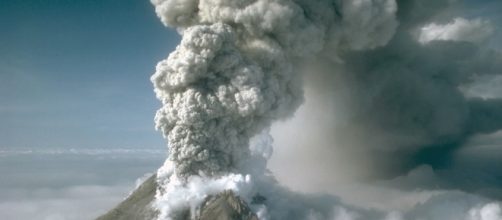During the Permian-Triassic boundary 250 million years ago, the Earth was enjoying some of its warmest temperatures when it was interrupted by a catastrophic cooling event. The new discovery shows an Ice Age forced a massive die-off of most marine life, and not global warming as once thought. It also shows the role geological events have played on our climate, specifically volcanic eruptions.
While the Earth has gone through a number of extinction level events, the one that happened at the Permian-Triassic boundary was one of the deadliest. Over 95 percent of marine life vanished from the face of the planet.
Scientists previously believed it was from a rise in temperatures that preceded climate change, but researchers from the University of Geneva and University of Zurich discovered the die-off arose from a mini ice age.
"The cold exterminated all of them" https://t.co/WimM424wW5
— hockey schtick (@hockeyschtick1) March 6, 2017
Dating the past
The researchers worked on sediment layers found at the Nanpanjiang basin in southern China. Bjorn Baresel, a University of Zurich scientist, said they made several cross sections of the basin sediments to determine the exact positions of ash beds in the marine sediments. Then they dated the sediments using the natural radioactive decay of uranium from the mineral zircon.
Because it decays at a specific speed, they can be accurate to within 35,000 years.
Once they dated the various sediment layers, the scientists noticed a mass extinction at the Permian-Triassic boundary represented by a gap in the sediment layers. That gap correlates to a time when seawater level decreased. And sea levels only drop when it gets stored into ice. From there they could determine the ice age lasted about 80,000 years, time enough to kill off 95 percent of all marine life.
The Siberian Traps Large Igneous Province, main suspect for the end Permian mass extinction (96% of species lost). It's just huge. pic.twitter.com/e2lgLjGrzB
— Thomas Ricciardiello (@thomasricci_) February 28, 2017
Massive volcanic eruption
Researchers believe a huge amount of sulfur dioxide was injected into the stratosphere, blocking out the solar radiation warming the Earth.
This coincides with a large geological event that occurred at the Siberian Traps millions of years ago. The Siberian Traps were where a massive volcanic eruption covering 770,000 square miles in Russia ejected vast amounts of lava, ash, and sulfur dioxide for nearly a million years. The event occurred during the Permian-Triassic boundary.
The study shows that global warming didn’t contribute to the mass die-off during the Permian-Triassic boundary despite CO2 levels being over four times higher than today’s levels, but rather caused by a natural disaster triggering an ice age. The study, which was published in Scientific Reports, should help scientists understand the role of geological events on previous paleoclimate incidents.

